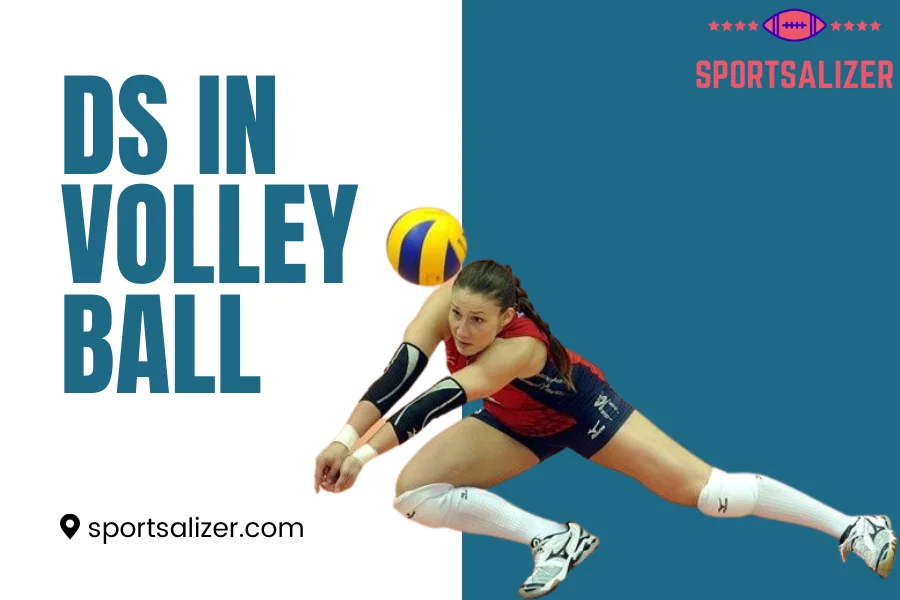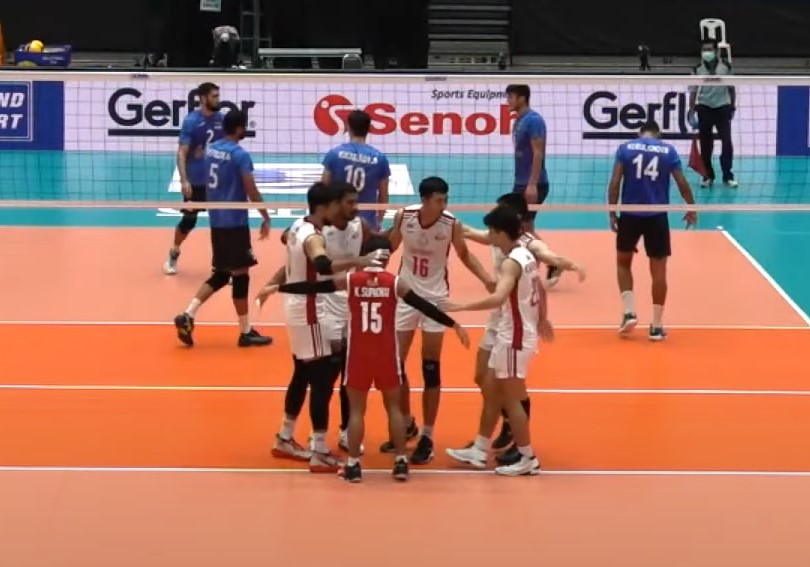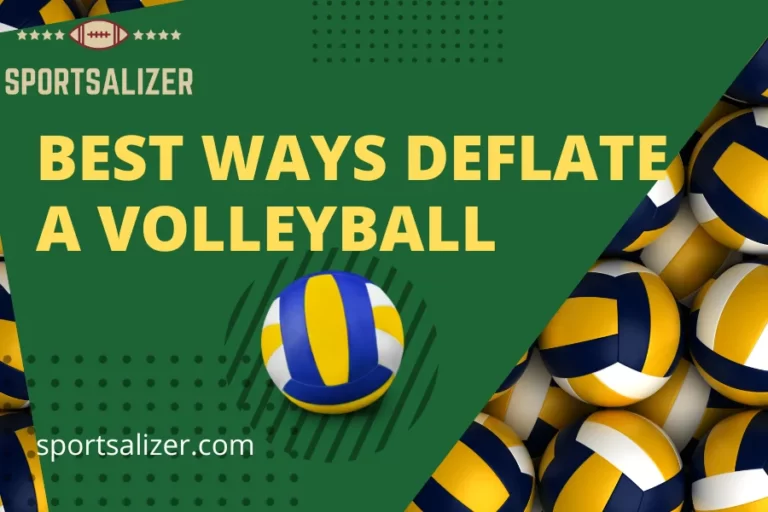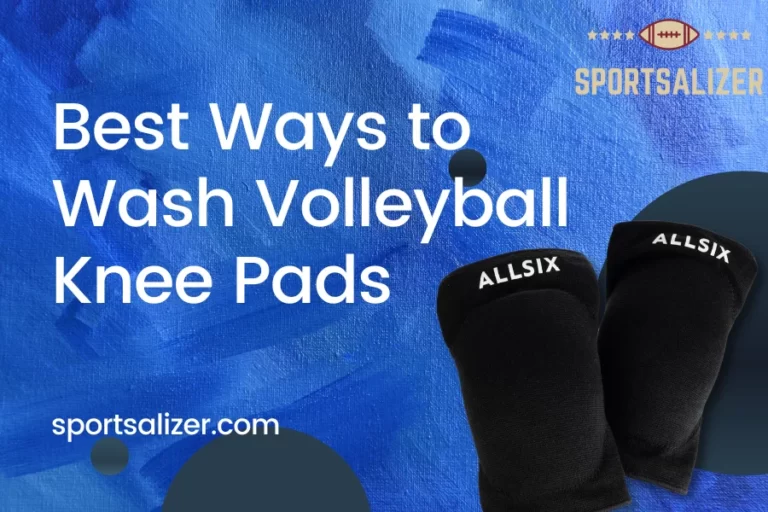DS In Volleyball Leads To Ultimate Defense: 7 Questions Answered

To be direct Ds in volleyball stand for Defensive Specialist. Along with DS, the volleyball game involves various players with different specialties. These different roles make the team stronger together. So if you are interested in volleyball and are curious about ds in volleyball, do not worry. In this article, we will look into what DS is in volleyball. What Does the DS Position Mean In Volleyball? What Is The Difference Between A Defensive Specialist And A Libero? Let’s get started.
Ds in volleyball is a Defensive Specialist meaning he specializes in playing defense. In the back row, defensive specialists are in charge of serving, receiving, and providing defense.
Contents
- 1 What is the role of ds in volleyball?
- 2 Does a team need both a defensive specialist and a Libero?
- 3 What is the difference between a DS and Libero?
- 4 Why Defensive Specialist Is A Great Position To Play?
- 5 What characteristics should a defensive specialist in volleyball have?
- 6 Exercises and training required to become an Ace Defensive Specialist
- 7 Why do players in volleyball rotate?
- 8 FAQs on DS in Volleyball
- 9 Trending Now
What is the role of ds in volleyball?
A defensive specialist is a player who excels at digging and passing. Typically, they are brought in to replace middle hitters who focus on hitting and blocking or another front-row player who struggles with ball control. The primary role of ds is to substitute for any player.
The DS enters a match only to play back-row defense. Before the offensive player’s spot in the front row again, defensive specialists are permitted to serve and frequently play the entire back row rotation.
Any player may be replaced by a defensive specialist (DS), who can sit in the front or back row. Before being replaced by a frontline player, the DS typically switches between all three back-row positions. Because each side is only permitted a total of 12 substitutes, a DS can only replace a certain number of times.
Does a team need both a defensive specialist and a Libero?
A team can also function with just the libero, developed to provide more versatility to the defensive specialist position, often known as DS.
A team might need both of them as they bring different advantages with them. They have other characteristics; when well coordinated, they can lead to a team victory.
A ds only enters the back row of one player, whereas liberos generally enter both middles. While a DS typically plays center back, a libero plays left back.
Liberos don’t need to make substitutions and have a different color shirt meaning the libero can come in and out of the game for other back row players, whereas the DS must use a substitution. There are no restrictions on how many substitutes a libero can make, but once they start replacing a player, they can only keep doing so for that player.
If necessary, a DS can play front row. When it comes time for them to rotate to the back row to zone 1 to serve, middle blockers are the ones who are most frequently replaced by their team’s liberos.
What is the difference between a DS and Libero?
You can see one difference between a DS and a Libero in the below image; he is in a red-white jersey while all other team members are in white-red. Two liberos are designated at the start of the play under FIVB (Federation Internationale de Volleyball) regulations. However, only one is permitted to be in court
at any given moment.

| DS | Libero |
|---|---|
| DS is primarily known for its defensive and versatile skills. | The libero was created to add additional versatility to the defensive specialist position. |
| A defensive specialist does not wear a different color t-shirt. | A libero has a different color of the T-shirt than other players. |
| They have no restriction on spiking. | Libero cannot spike the ball above the height of the net. |
| They can rotate completely around the court. | Libero is not allowed to play front-row. |
| DS is sided in to play against more formidable opponents to defend them from scoring points. | The color of the jersey quickly identifies them while they are always present on the court. |
Why Defensive Specialist Is A Great Position To Play?
A defensive specialist is in an excellent position as
- it has no restriction on the movement,
- can rotate and play the ball above the net
- and also able to play in the front row.
- If you compare it to a libero, they have a lot of restrictions.
What characteristics should a defensive specialist in volleyball have?
1. Team-leading skills
A defensive specialist is the most experienced player on the team. They provide strategies for the game and support weak players on a set.
This support provides support and confidence among other team members, improving the team’s overall game.
2. Excellent co-ordination
Since ds is the most experienced player, they better understand the overall game. This helps them to take the right calls for the team. They guide other players and improve their weaknesses. They quickly understand the player’s playing style and make better decisions in favor of the game.
Their understanding, strategies, and calls make the team work better together.
3. Defensive Specialist
As they are the most experienced and help the team with strategic points, they also enhance their game through physical abilities. They are excellent passers and can defend the opponent’s move when replaced in the front row. They can manage the ball even in the most challenging game set, giving the team member hope and overall good team performance.
Exercises and training required to become an Ace Defensive Specialist
They are required to practice for various roles, and training is required for all of them. Different exercises are listed below.
1. Versatility
They have to train for different roles to be versatile. They are replaced by weak players requiring them to fit in every role.
For them to understand the rotation in the game, we can start by replacing the back row player with the ds and then switching them back after the rotation is complete.
Again substituting them with the other side positions and then switching them out after the rotation is complete.
This can be scheduled regularly and done during the practice matches. They can be further switched to other positions for more versatility.
2. Excellent Passing
Ds are excellent passers of the ball. they can handle even the most challenging deep passes. To excel in this skill, they often practice how their practice focuses mainly on agility and lateral mobility.
Have the player return the ball to the stationary setter at the slap by running far into position. Throw a second ball short, which they must grab to continue, and place them in the back of the line. This is a fantastic warm-up since it should be a quick-paced drill that promotes quick footwork and
tempo.
Utilize a point system or timer as necessary, then move on to the next drill.
3. Figure 8 drill
You can follow the technique and understand this drill with th below video. Note that always wait for the throw to get its direction instead of guessing; watch the video to understand it better.
4. 4 on 4 Hitting
- As the name suggests, it is a 4 vs 4 games.
- The base is 1 setter and 3 back row players.
- Your squad switches positions each time the ball goes over the goal.
- Hits must always be delivered from behind the assault line.
- If a player is unable to hit, they will be eliminated.
They will be finished once any of the team is all-out.
5. 3 on 3 in a row
- There will be 3 players on each team.
- They will be in the back row.
- Also, there will be an extra player behind the line for rotation.
- The attacking player will rotate, and someone will be replaced.
Why do players in volleyball rotate?
Following the opponent’s serve, players go clockwise around the court after winning a rally. You should know that the volleyball court is separated into an attack zone and a defense zone to better grasp it.
In each zone, there are three players.
Players in the front row are permitted to assault the ball in the attack zone while blocking the opponent.
Players go from rotating positions to their playing positions while playing the defense. The back row digs up the opposition’s attacks and strikes the ball behind the attack line.
Rotating the service allows everyone to serve. Every player is forced to play outside of their comfort zone when a rotation system is in effect. The same is true for the opposing team.
The team needs to play strategically to gain more from more full rotations and suffer fewer losses from weaker ones. The rule increases the game’s level of competition, intrigue, and strategy. Every player is somewhat weak in some zones while being strong in others.
.
FAQs on DS in Volleyball
What does DS mean in volleyball terms?
DS stands for Defensive Specialist in volleyball. Along with other players, he is responsible for the defensive and strategical aspects of the game.
Are DS and libero the same thing?
Libero is often confused with DS, but there are a lot of differences between them.
What is the hardest position in volleyball?
The setter is the most challenging position in volleyball.
Is a defensive specialist a libero?
No, an actual DS is entirely different. DS can play the front row while libero has extra restrictions for contacting the ball above the net. However, the libero was created to add versatility to the defensive specialist position.
What is the easiest position in volleyball?
Libero is often said as the most accessible position in volleyball.
What are the 2 defensive skills in volleyball?
The two defensive skills are rolling and sliding.
For all the latest updates regarding volleyball, check them out here.





![Still Confused Does Volleyball Make You Taller? [Answered]](https://sportsalizer.com/wp-content/uploads/2022/09/does-volleyball-make-you-taller-768x512.webp)




